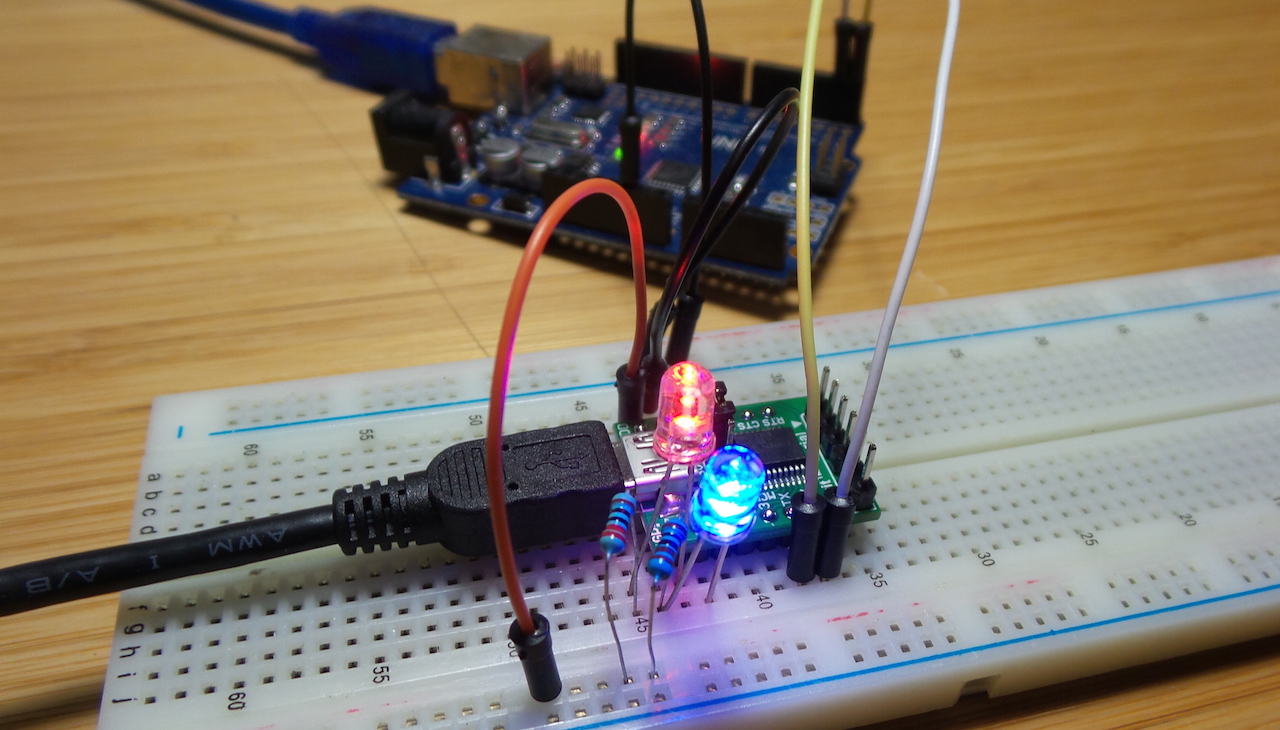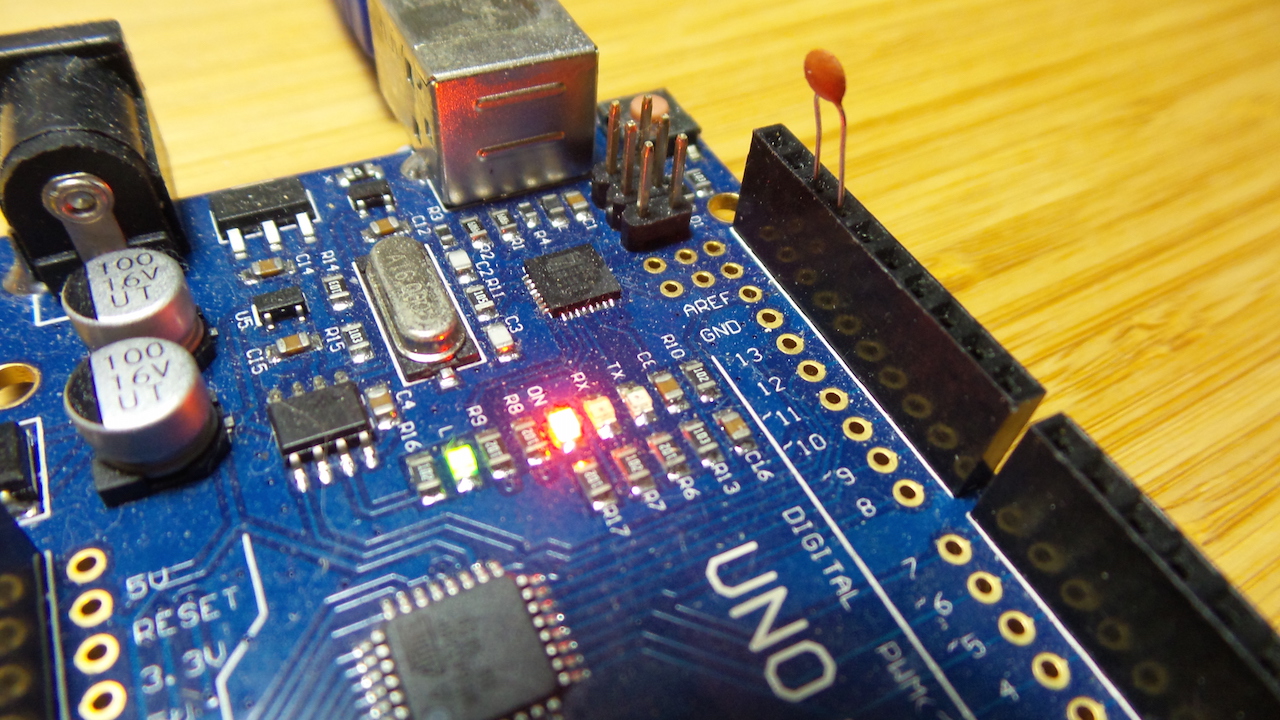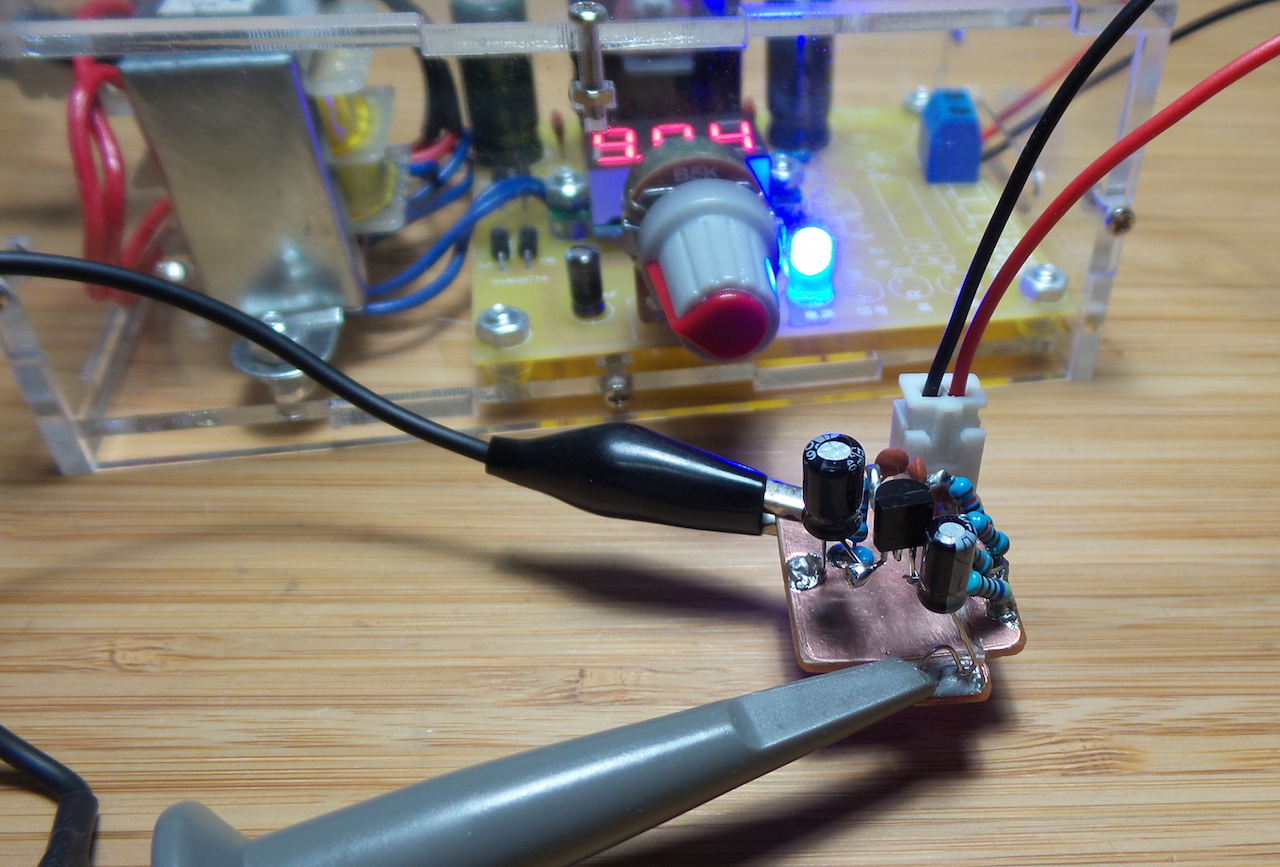LEAP#335 MCP2200 LED Chaser (just because)
The MCP2200 USB-UART transceiver has 8 GPIO pins. Yes, you read that correctly.
With such unexpected I/O capabilities, I feel obliged to do the only responsible thing: blink LEDs.
Seven LED outputs and one input for a push-button to control direction of the “chase” sequence.
As simple C program using the hidapi and we’re done!
As always, all notes, schematics and code are in the Little Electronics & Arduino Projects repo on GitHub

read more and comment..
LEAP#334 Exercising the MCP2200 USB-UART transceiver
The MCP2200 is a USB-to-UART serial converter device.
It is getting a bit on the old side, only supporting USB 2.0, and all the software support provided is Windows-only.
Nevertheless, I got hold of the MCP2200 Breakout Module to find out more.
I was particularly intersted to see how far I could get under MacOSX, including configuration over the HID Interface.
The answer is pleasantly: all the way!
As always, all notes, schematics and code are in the Little Electronics & Arduino Projects repo on GitHub

read more and comment..
LEAP#333 Measure Thy Own Voltage
One of the issues with analogue measurements on the Arduino is that typically we assume an accurate 5V reference,
and need to add fudge factors for a calibrated reading.
Well, I borrowed some code and re-read the ADC part of the datasheet again, and there is a neat little trick for
using the 1.1V internal voltage reference to measure (thus calibrate) the supply voltage.
It works, but not without caveats - so although QI, I’m afraid the net result may not be much of an improvement!
As always, all notes, schematics and code are in the Little Electronics & Arduino Projects repo on GitHub

read more and comment..
LEAP#332 RC Phase Shift Oscillator
Three RC high-pass filter poles add more than 180˚ phase shift on top of
the 180˚ contributed by a class A BJT inverting amplifier with enough gain to sustain positive feeback.
And that’s all you need to make an oscillator.
As always, all notes, schematics and code are in the Little Electronics & Arduino Projects repo on GitHub

read more and comment..